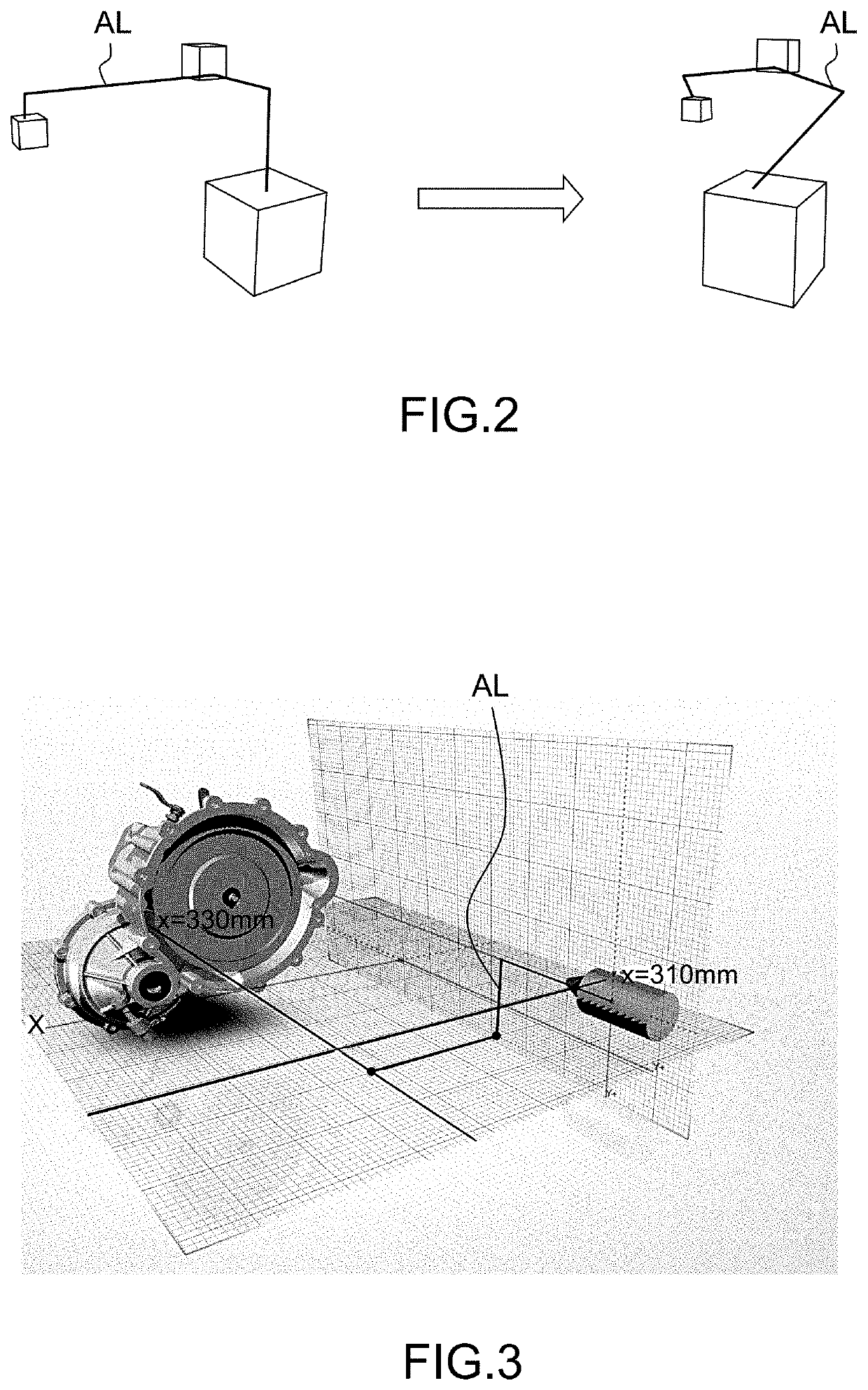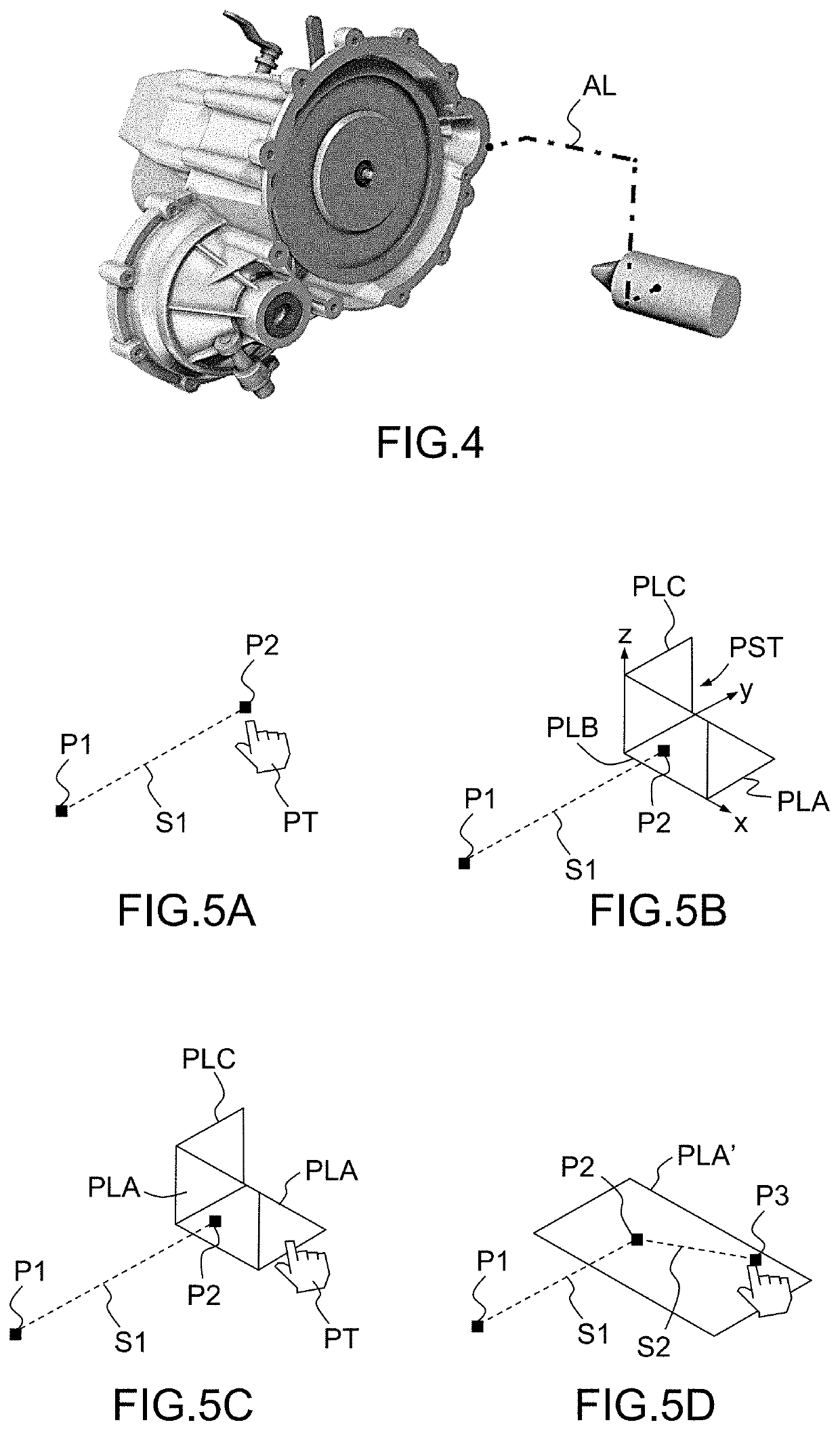Computer-implemented method for drawing a polyline in a three-dimensional scene
a three-dimensional scene and polyline technology, applied in the field of computer graphics, can solve the problems of inability to accurately determine the angle between segments of consecutive segments of polyline, cumbersome grid creation and positioning, and loss of user experience, so as to achieve the effect of sufficient flexibility, simple and effective, and accurate determination of the angle between segments
- Summary
- Abstract
- Description
- Claims
- Application Information
AI Technical Summary
Benefits of technology
Problems solved by technology
Method used
Image
Examples
Embodiment Construction
[0037]A description of example embodiments of the invention follows.
[0038]Hereafter, a “three-dimensional” (or “3D”) object will be an object, or rather its digital representation in a computer system, allowing a three-dimensional (3D) graphical representation. A 3D representation allows the viewing of the part from all angles. For example, a 3D object, when 3D represented, may be handled and turned around any of its axes, or around any axis in the screen on which the representation is displayed. A three-dimensional scene is constituted by a plurality of 3D objects disposed in a three-dimensional space.
[0039]Conversely, a “two-dimensional” (or “2D”) object will be an object only allowing a two-dimensional (2D) representation e.g. on a plane. For example, a 2D object may only be translated in the plane of the screen on which the representation is displayed, or rotated around an axis perpendicular to said screen.
[0040]The first step of the inventive method, illustrated on FIG. 5A, con...
PUM
 Login to View More
Login to View More Abstract
Description
Claims
Application Information
 Login to View More
Login to View More - R&D
- Intellectual Property
- Life Sciences
- Materials
- Tech Scout
- Unparalleled Data Quality
- Higher Quality Content
- 60% Fewer Hallucinations
Browse by: Latest US Patents, China's latest patents, Technical Efficacy Thesaurus, Application Domain, Technology Topic, Popular Technical Reports.
© 2025 PatSnap. All rights reserved.Legal|Privacy policy|Modern Slavery Act Transparency Statement|Sitemap|About US| Contact US: help@patsnap.com



